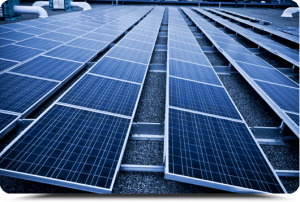In a revealing piece on how the solar lobby won a big, long-term extension of the investment tax credit in last year’s federal budget deal, Greentech Media traced the political strategy that led to the victory:
SEIA’s planned campaign consisted of five components: hire more lobbyists, grow its political action committee and donate to more candidates, work with state chapters to build local support, sharpen communications, and use research to show lawmakers where installation growth and job creation is occurring….
That last component — jobs and installation data — was critical for building support. It became particularly important after the fall of 2014, when Republicans took control of the Senate.
“When the Senate flipped, we started focusing on leadership. Tapping into that kind of [employment] information was essential for developing strong champions,” said Rhone Resch, SEIA’s president and CEO.
Armed with employment and project data, SEIA targeted Senate Republicans in key committee positions from Georgia, Ohio, Nevada and North Carolina — states where employment numbers had soared in recent years.
 The campaign required a sustained focus on getting Republican support, a task made more difficult by the 2012 presidential campaign and the constant invoking on the right of the failed Solyndra federal loan. And that’s where Lott came in to help win back key Republicans, as did one of Paul Ryan’s former aides.
The campaign required a sustained focus on getting Republican support, a task made more difficult by the 2012 presidential campaign and the constant invoking on the right of the failed Solyndra federal loan. And that’s where Lott came in to help win back key Republicans, as did one of Paul Ryan’s former aides.
The message here is twofold: first, solar PV is now a mainstream, bipartisan clean technology, which can only bode well as a “gateway drug” to bipartisan acceptance of other clean technologies, from energy storage to electric vehicles.
Second, tallying the economic benefits of these technologies, as the solar lobby did, is clearly a critical strategy to getting Republican support. California clean tech advocates should take note as they gear up for a legislative battle with conservative Democrats and Republicans over in-state 2030 greenhouse gas targets.
Meanwhile, solar industry guru Jigar Shah generally opposes the investment tax credit as (ironically) dampening investment in solar, although he still likes the budget detal. He explains why in a recent interview in PV Magazine:
Now there are those who have no interest in investing in solar, not because they are against it, but just because they don’t really love the tax credit. Because if you are a pension fund, you don’t pay taxes.
And so now we are going to go back to them and say, now there is a phase-down now by 2023, why don’t you go back and do all the work that you need to do, so that by 2022, you are actively able to invest.
But the bottom line is that everyone in the industry is more than pleased with the budget deal, which secured the future of solar PV.
Who would have guessed that a Dixiecrat sympathizer from Mississippi would have helped make it happen?


